I have a great list of books to share with you today, including a few that will almost certainly be on my list of favorites for the year. Of course I have big thoughts on all of these titles, so let’s get right to those reviews.
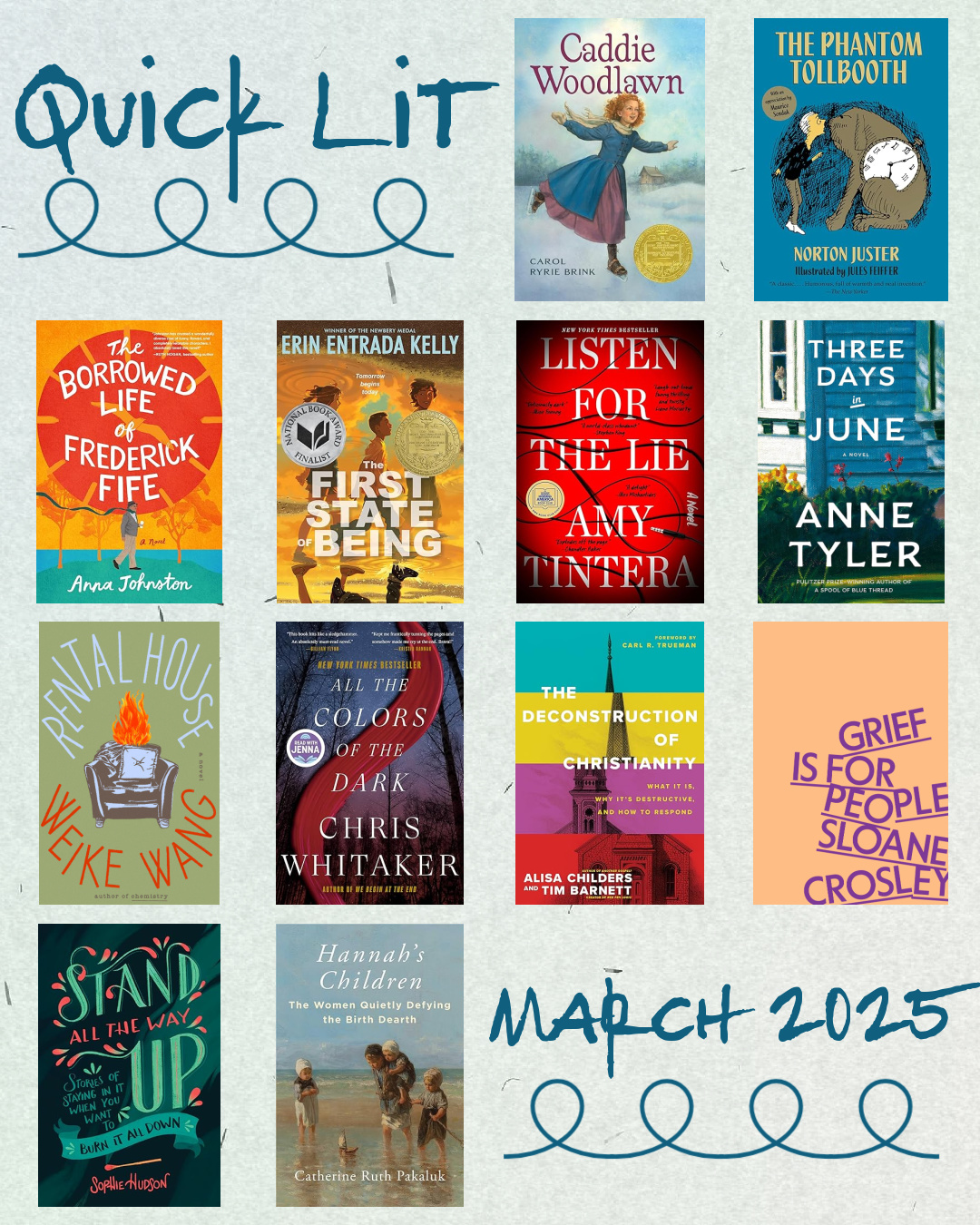
READ-ALOUDS
The kids and I did a little something different with our read-alouds this month: we had previously done different styles of book reports, but were inspired by Kaytee of Currently Reading to try our hand at a working together to write a review. I’m sharing those reviews (of Caddie Woodlawn and The Phantom Tollbooth) below. I helped with some of the wording, but most of the words and all of the ideas came from Charleston, with contributions from Kali and Sully. We plan to continue writing family reviews of our books for our future read-alouds, as it was a great experience for all of us.
Caddie Woodlawn, by Carol Ryrie Brink—Caddie Woodlawn is a spunky tomboy growing up in a family of nine in rural Wisconsin in the 1860s. Caddie’s mother wishes she would be a little lady, but her father is happy to let her run free with two of her brothers. She tackles every dare she comes across, from pranking her pretentious Boston cousin to winning a bet with her fearless uncle, a great outdoorsman. Caddie loves to spend time with her Indian friends who scare many of her prejudiced neighbors, and she models the kindness and bravery we love to see in our young heroines. The book is filled with many of her adventures and we especially liked the stories about Caddie’s dog Nero, the schoolhouse fire, and the tales told by her oldest brother.
Kali especially loved this book because “it has a girl being nice” and because she liked the way Caddie’s mom and dad talked to their children. Charleston was intrigued by how far a silver dollar could go in those days and wishes he could revisit that time, and he liked seeing Caddie learn from her mistakes (even if she did it the hard way). Sully was sad when Caddie lost her dog but he still enjoyed the story. Mom appreciated the themes of family and courage and patriotism, and enjoyed seeing Caddie learn to embrace her femininity without sacrificing her adventurous spirit.
After reading, we wish we knew which parts of the book were true (as this is based on the author’s real-life grandmother, Caroline). We should also note that the language and attitudes around Native Americans are representative of the time in which the book was written (1935) and can be a little uncomfortable for modern readers. This book is perfect for fans of the Little House series who are looking for something less familiar.
Charleston’s Rating: 4.5 Stars + Kalinda’s Rating: 5 Stars + Sullivan’s Rating: 4.5 Stars + Mom’s Rating: 5 Stars (I read this book with students back in my teaching days, and enjoyed it even more with this reread, especially since the parental themes hit different.) // Book Format: Print
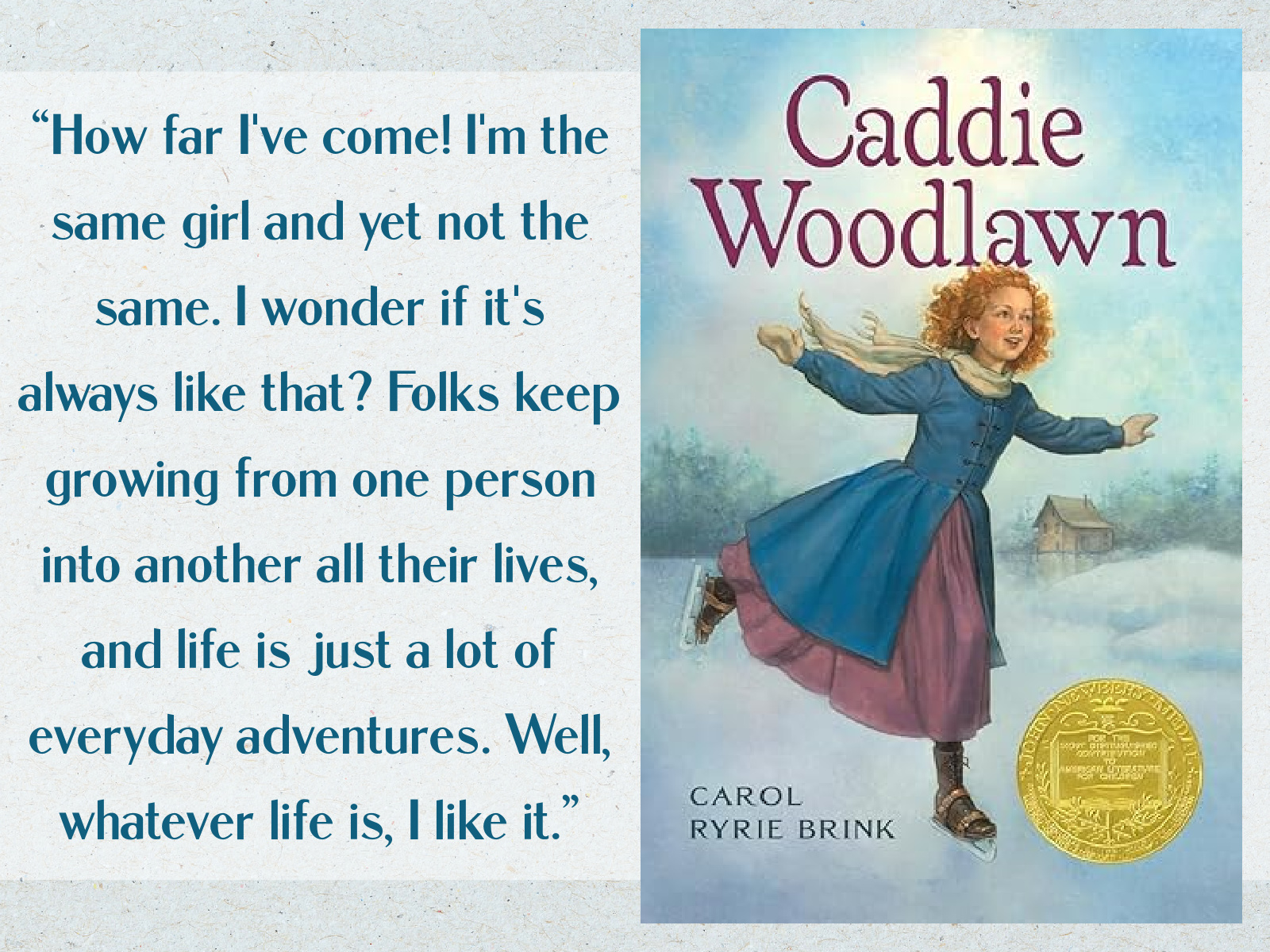
The Phantom Tollbooth, by Norton Juster—The Phantom Tollbooth is a book about a boy named Milo who thinks that everything is a bore. Then he discovers a tollbooth in his room that can transport him to the land of Wisdom. While he’s there he makes friends with a watchdog named Tock, a Humbug, and a Spelling Bee (among others). He learns that to make Wisdom a better place, he needs to bring back the lost princesses Rhyme and Reason. He finds that Wisdom is a very literal place, and his journey is filled with much more than he could ever imagine.
We all liked this book quite a bit. Charleston enjoyed the fast pace and creative play on words, with characters and dialogue that tie in to vocabulary, grammar, and puns. We all especially liked the character of Tock, a literal watch dog with a clock face for a body. Kali was a big fan of the beautiful princesses and the castle where they lived. Sully really loved the character of Milo, who reminded him of Charleston. The many illustrations helped the book to move quickly and added to the story.
We would recommend this book to kids ages 8 and up who like word puzzles and riddles.
Charleston’s Rating: 4.5 Stars + Kalinda’s Rating: 5 Stars + Sullivan’s Rating: 5 Stars + Mom’s Rating: 4 Stars (You can read my original review from when I read this in 2017 here.) // Book Format: Print

FICTION
The Borrowed Life of Frederick Fife, by Anna Johnston—Frederick Fife has had a rough go of things lately. At eighty-two, his life feels empty of all that once brought him joy, especially his beloved Dawn whose absence is a crushing weight of unshakable grief. He’s also broke and on the brink of eviction, but that problem is resolved in the most shocking of ways when he’s mistaken for Bernard Greer, a missing resident from the local nursing home. Fred hesitantly takes Bernard’s place and soon settles into this new life of warm meals, unexpected friendship, and—perhaps—even the family he has always longed for.
What a lovely story this is. I have a soft spot for elderly protagonists, and Fred is an absolute gem of a character (think Carl from Pixar’s Up, without the grouchiness). The writing is insightful, offering a profound examination of grief and lifelong love and the power of connection. Fred’s story is interwoven with those of several other individuals—from Denise (the wounded caregiver at Bernard’s facility) and Kevin (a nurse looking for love), to Albert (a fellow resident in the final stages of dementia) and brokenhearted Hannah (who is in desperate need of a father figure)—and together they bring healing, wholeness, and purpose to one another in ways that are messy and real and altogether beautiful.
The novel is set in a nursing home and accurately depicts many of the difficult aspects to aging including memory loss, incontinence, loss of mobility, and even death. These are not easy issues to read about, but the author (who has a background working in aged care) handles these subjects delicately—sometimes with humor, but never in a way that diminishes the dignity or value of her characters; I found the life-affirmation incredibly refreshing.
While I adored the redemptive, feel-good parts of this book, I could have done without all the toilet humor and slapstick comedy that was over-the-top at times. I also struggled with some elements of elder abuse that are included as examples of a “hurting people hurt people” theme but were still difficult to stomach. And there is a strange “twist” in the book that I liked but that felt a tad contrived. These aspects, plus a slower start to the story, kept it from being a 5-star read. Still, this book managed to win me over with its irresistible love story (storIES, actually) and unforgettably moving meditations on loneliness and grief. I loved learning from the Author’s Note that this story was largely inspired by the author’s grandparents; beautiful!
My Rating: 4.5 Stars (Rounded to 5 Stars on Goodreads.) // Book Format: Kindle
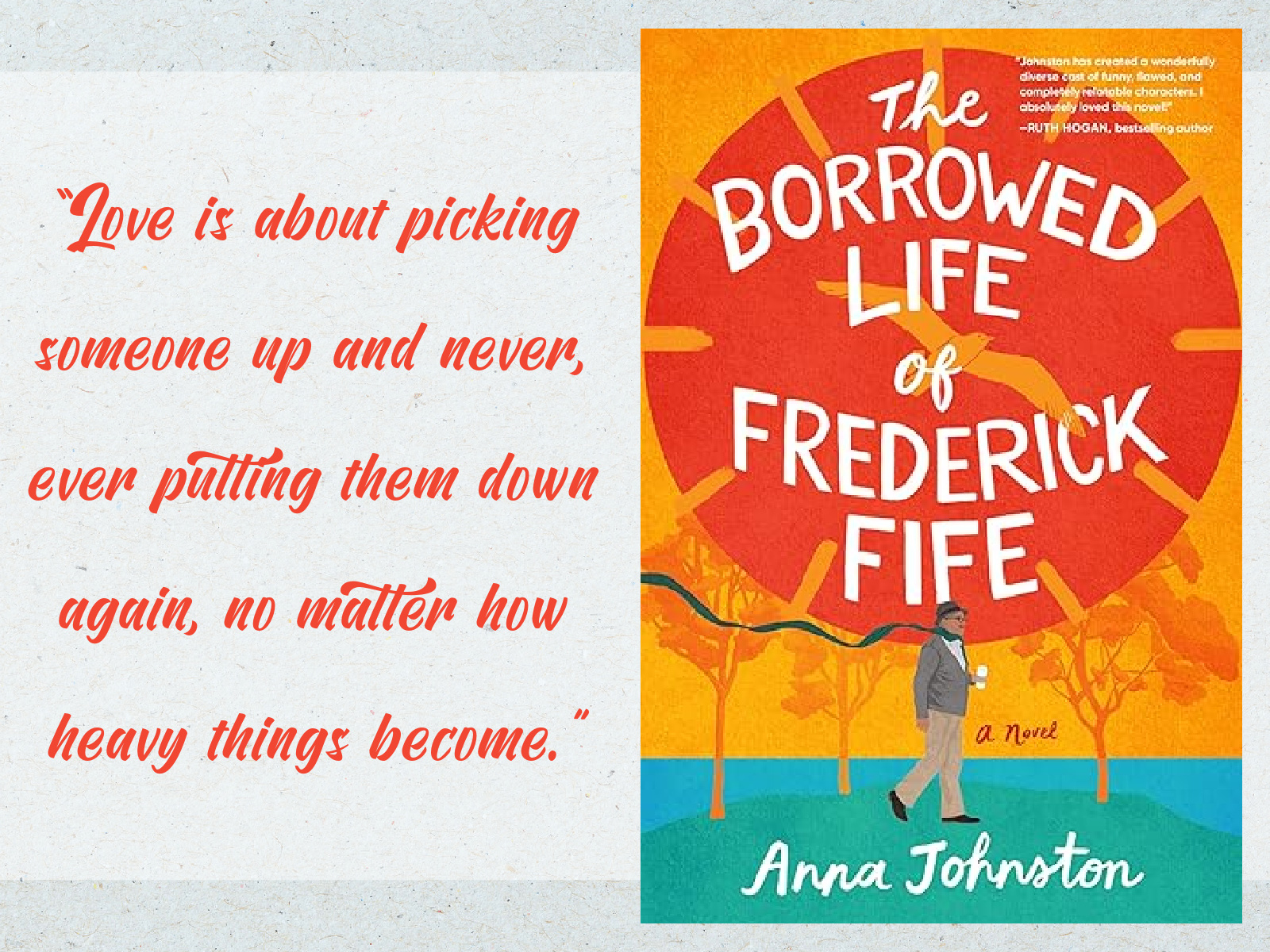
The First State of Being, by Erin Kelly Entrada—In this novel (the 2025 Newbery winner), it’s August of 1999 and twelve-year-old Michael Gibson has a lot on his mind: his single mom’s precarious job situation, the bullies he encounters in his Delaware neighborhood and at school, his 16-year-old crush Gibby (who happens to also be his babysitter), and of course the looming Y2K crisis for which he’s been shoplifting snacks in order to fortify his emergency stockpile. All that gets set to the side when an unexpected visitor arrives in the form of Ridge, a teenage time traveler from two hundred years in the future.
Michael’s initial skepticism about Ridge soon turns to fascination with this new stranger (and, most importantly, Ridge’s potential to tip Michael off about how much to worry about the turn of the new millennium), but Michael’s intrigue pales in comparison to Ridge’s fascination with all things 1999. Ridge has read about things like malls and printed magazines and living tigers, and seeing them in real life is a dream come true! But Ridge can’t stay; the longer he remains in the past, the more potential he has to alter the trajectory of history. Together Michael and Gibby must help Ridge solve his time travel woes, before it’s too late.
A Kirkus Review of this book perfectly captures my exact thoughts with this description: “a warmhearted blend of nostalgia and futurism.” This is a sweet, creative story with memorable characters and a lot of great things to say about the past, the future, and our own role in the present, and I was impressed with the author’s ability to pack so many emotions and ideas into such a compact tome.
If you’ve read my review for any amount of time, you know I have a thing for time travel novels, and I really enjoyed that element of this one—both the throwback references to 1999 (a time I remember well) and the postulations on what life may be like two centuries from now. The alternating shift between present and future was particularly well done, with the future time period told through articles and transcripts . (I can imagine, though, that this would not transfer well to audiobook format).
Though this is marketed as Middle Grade, it definitely falls on the older end of that spectrum. Aspects of the story (including the exploration of several scientific theories) would be difficult for younger readers to follow, and many of the themes (grief, chronic anxiety, complicated social dynamics, adolescent emotions, historical significance) are pretty mature. There are also some worldview issues to navigate: a minor character is nonbinary and goes by alternative pronouns; there are several references to swearing (though profanity is replaced with appropriate substitutes); and there is some commentary on controversial issues such as climate change, medical interventions for behavior issues, and more.
Keeping the potential stumbling blocks in mind, I would tentatively recommend this novel for preteens eager for a unique story with nuanced characters and strong emotional impact.
My Rating: 4 Stars // Book Format: Kindle
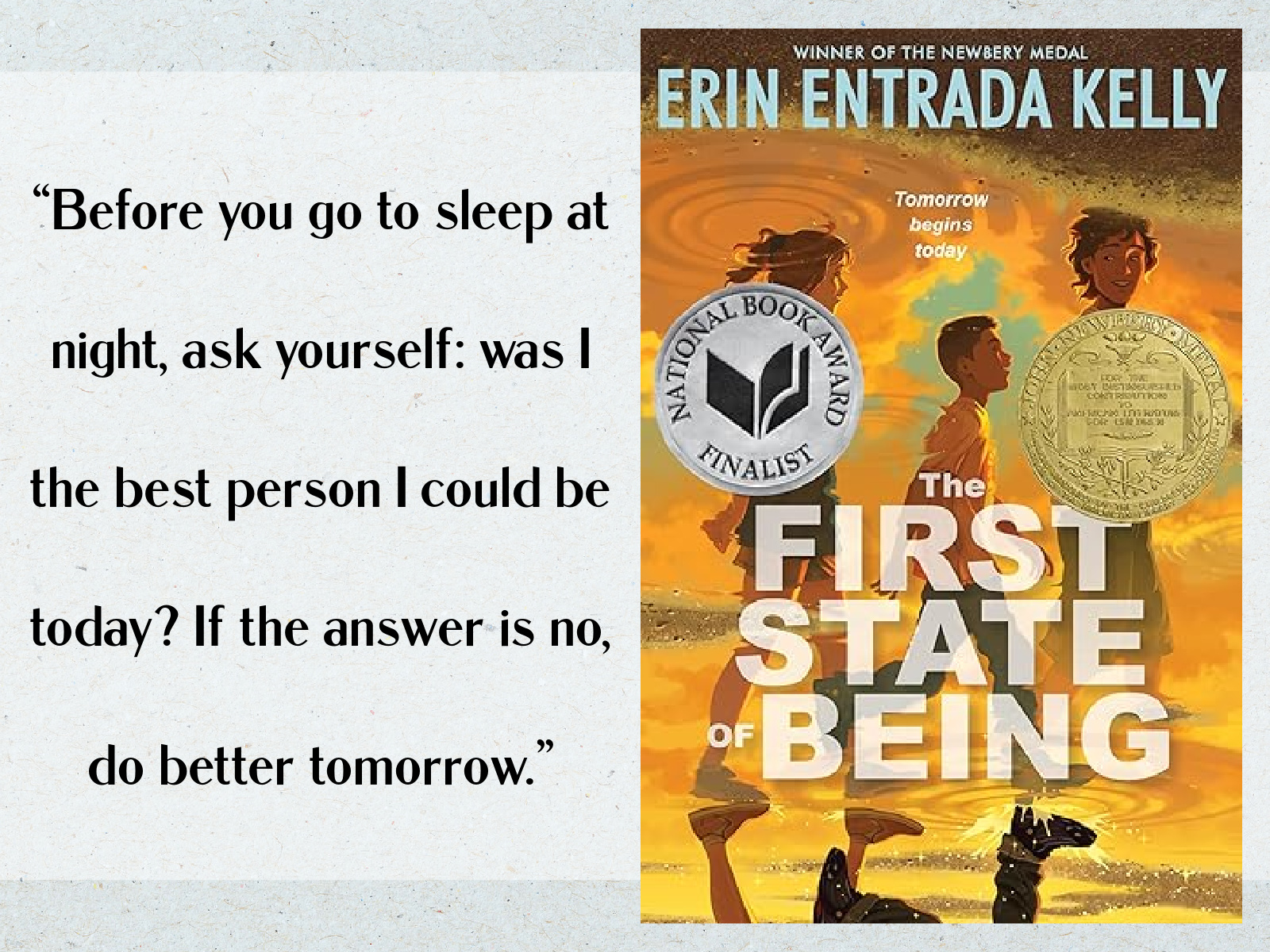
Listen for the Lie, by Amy Tintara—Five years ago, Lucy was found wandering the streets of her small Texas town covered in her best friend Savvy’s blood. Everyone assumed Lucy was a murderer, and though she was never convicted of the crime, Lucy herself is unsure of her own guilt since she has no memory of that night. She fled to LA to start a new life, but her past comes to find her when Ben Owens, host of the hit true crime podcast “Listen for the Lie,” makes Lucy and Savvy’s story the subject of his second season. Lucy is forced to return to Texas where she joins forces with Ben to finally solve her friend’s murder—even if the investigation finds that Lucy really is the murderer everyone believes her to be.
This book is very popular and I can understand why. The subject matter is dark with zero glimmers of hope, but the narration is humorous (the morbid humor reminded me a lot of the Finlay Donovan books) and the mystery itself is intriguing. Although the amnesia and podcast tropes have been overused in contemporary thrillers, they work well here to keep the story interesting; I definitely flew through this to discover the truth. The small town Texas setting (largely based on the near-to-me town of Fredericksburg) is also a highlight, and the book speaks into the issues of domestic abuse and gaslighting in some unique and important ways.
Unfortunately, the book contained more misses than wins for this reader. The characters are abhorrent, as is the profanity, violence, and rampant sex (which isn’t explicit but is definitely pervasive with a ridiculous amount of infidelity). While the content is R-rated, the characters read young and I was unsurprised to learn that this is the author’s adult debut after years of writing for young adults
Fans of fast-paced thrillers who are open to grittier content and like a touch of laughter and romance with their murder will likely love this. As a more sensitive reader, it simply wasn’t a great fit for me.
My Rating: 2.5 Stars (Rounded to 3 stars on Goodreads.) // Book Format: Kindle (I can imagine that the podcast element—with chapters told through podcast transcripts—would work great on audio.)

Three Days in June, by Anne Tyler—Gail Baines’s weekend is off to a rocky start: it’s the eve of her only daughter’s wedding and she’s just been dismissed from her administrative position at a school that felt like home. When she returns to her house, Gail is greeted by her ex-husband, Max, who (along with an orphaned cat) has arrived unannounced and in need of a place to stay for the wedding weekend. Then Gail receives some concerning news about her daughter’s husband-to-be, bringing her to question their upcoming marriage as well her own choices in her long-ago relationship with Max.
I was late in discovering Anne Tyler, but she’s become a favorite author in recent years, and this “quintessentially Tyler” book delivers just what I’ve come to expect from her: subtle humor, slice-of-life storylines, keen insights into human nature, and vivid characters who seem so incredibly real that I expect them to leap right out of the book. I found the character of Gail to be almost uncomfortably relatable, with her pragmatism and discomfort with novelty, extravagance, or change. I appreciated the exploration of Gail’s former marriage to the free-spirited Max, and I was impressed with Tyler’s portrayal of the mixture of emotions Gail experiences in navigating the etiquette, expectations, and even drama surrounding her daughter’s wedding.
Tyler’s prose is spare yet specific, subtly capturing huge feelings and observations in the smallest of details. This is a short book—under two hundred pages—and while I could have spent twice as long in this story, the shorter format works well for this story that takes place across just three days. I found the ending to be absolutely perfect.
My Rating: 4.5 Stars (Rounded to 4 Stars on Goodreads) // Book Format: Kindle
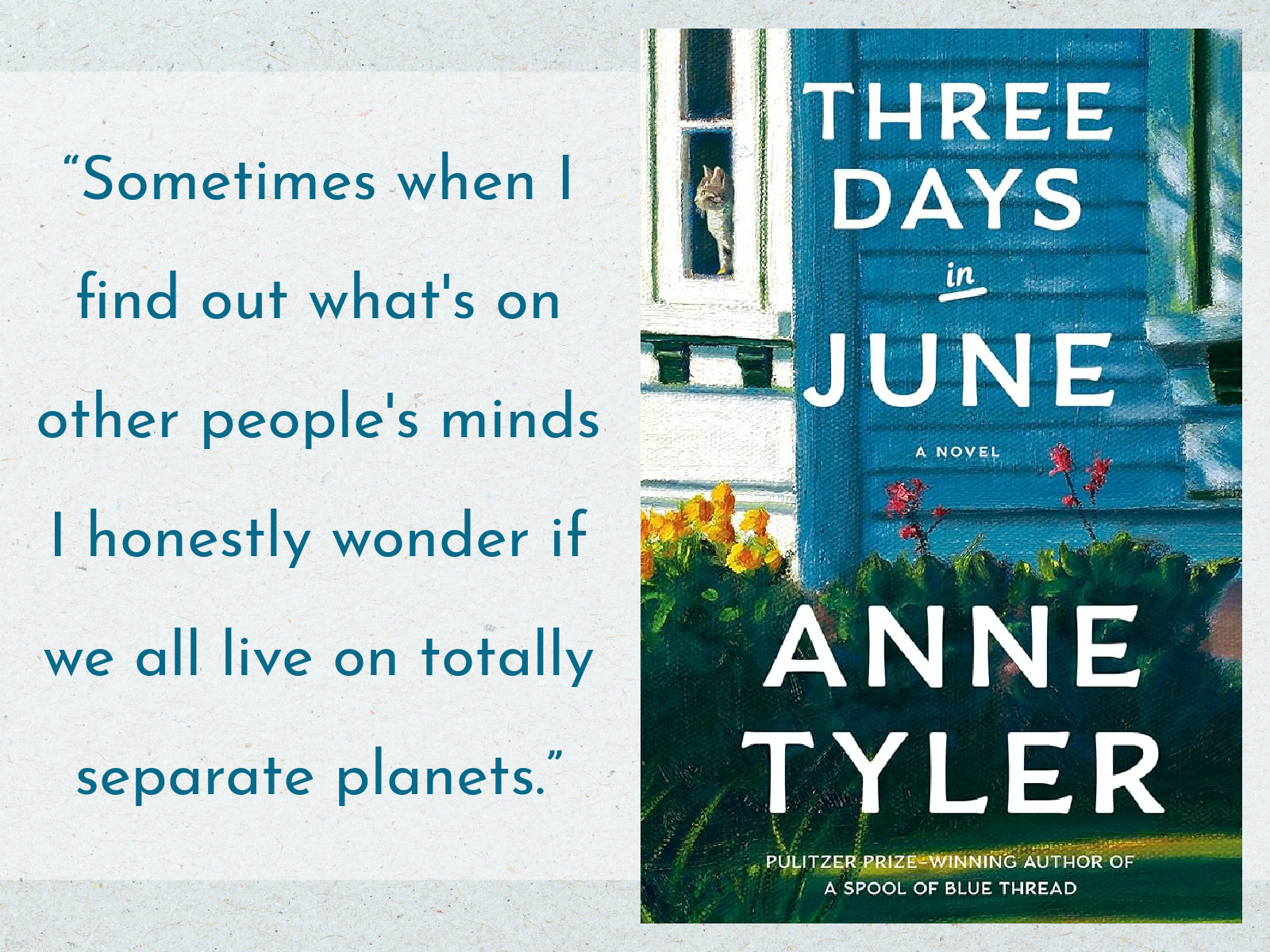
Rental House, by Weike Wang—Keru and Nate are an unexpected pairing: he’s from a white, working class Appalachian family with distinctly conservative views; she’s the daughter of Chinese immigrants who demand nothing short of perfection from their only child. But sparks flew when Nate and Keru met during undergrad at Yale and now, several years into their marriage, their worlds are coming together (separately) at a Cape Cod beach house that they’ve rented for the summer. First Keru’s parents (still highly risk-avoidant in the year following the COVID pandemic) come to stay for a week, followed by a week-long visit from Nate’s aggressively laid-back parents. The family times are night and day from one another, and in them we see the discomforts and struggles of a biracial couple navigating the complexities of one another’s cultures and family dynamics.
This is the third book I’ve read from this author, whose writing is quirky yet insightful and offers an enlightening look at family dynamics within the Asian culture (something I’ve only observed peripherally in my own life). I enjoyed the first half of this novel quite a bit: even though the specifics of these families are different from my own, I (along with every married individual) could relate to some of the complexities and nuances of relating to one’s in-laws, from the challenges of understanding the spouse’s family culture and background to the strangeness of seeing your loved revert to different behaviors when immersed in their family of origin. Keru, Nate, and their parents are rather unlikeable characters and their views and behaviors are cringey at times, but I felt invested in their story and their relational dynamics, and the sharp writing prompted a lot of interesting reflection on class, race, expectations, and extended family life.
The second half of the novel didn’t work as well for me. It is set several years into the future and follows Nate and Keru on a different vacation, this one in at a luxury bungalow in the Castskills and without their parents. This latter half of the book felt like an unnecessary add-on to a thought-provoking first act, and while it does offer interesting commentary on the DINK (Double Income No Kids—though Nate and Keru hate this term when they learn it) lifestyle and the discrepancies between “vacation life” and “real life,” I was not nearly as interested in this part of the story.
Taken as a whole, this is a book I’m glad that I read as it is well-crafted, witty, and memorable, but it is not my favorite from Weike Wang and I can see why it is receiving unfavorable reviews from other readers.
My Rating: 4 Stars // Book Format: Kindle
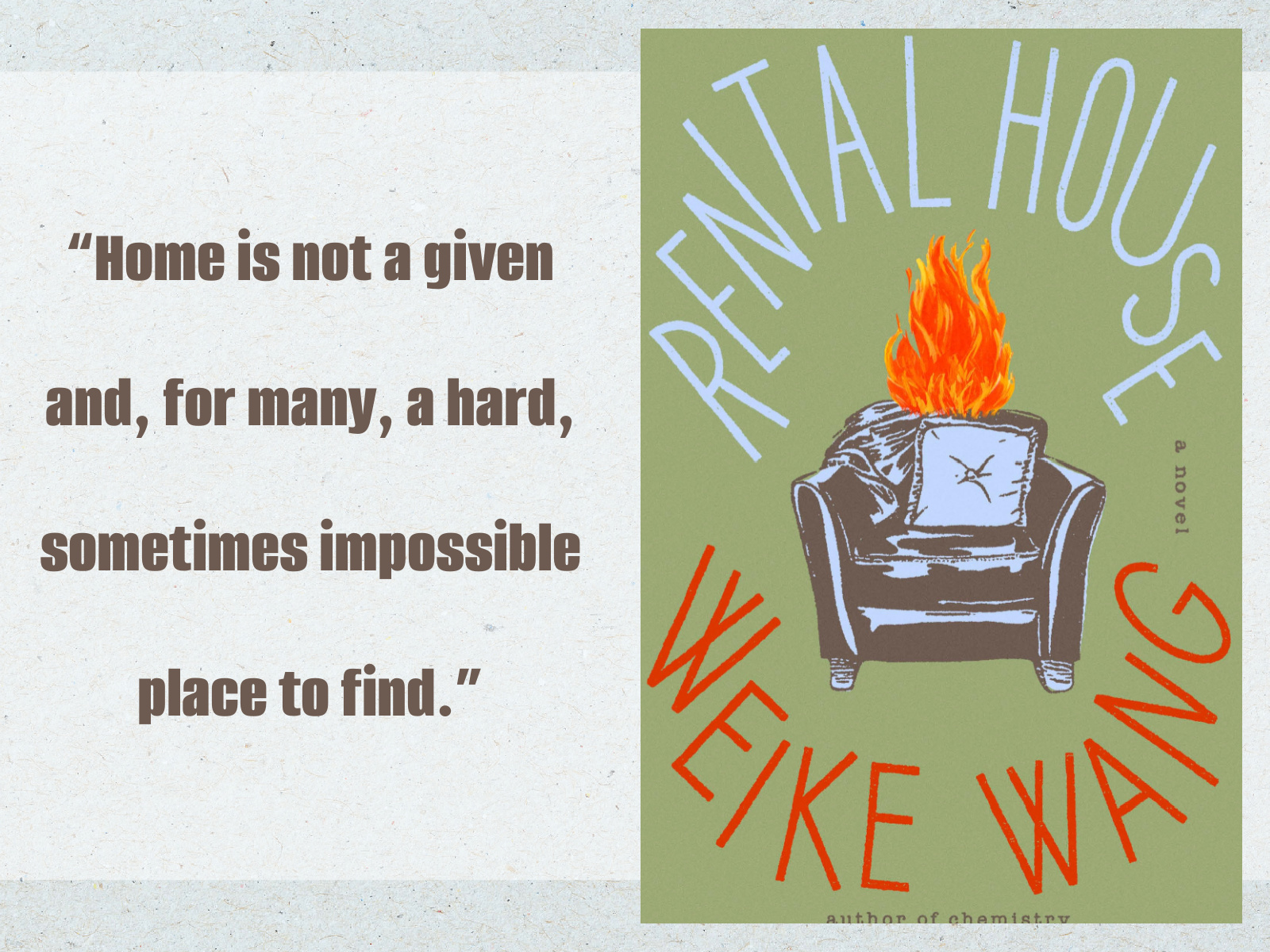
All the Colors of the Dark, by Chris Whitaker—I occasionally come to the end of a book so bedazzling that I’m rendered nearly incapable of writing a review; no commentary feels adequate. That was my experience with All the Colors of the Dark. BUT you came here for a review, not incoherent effusiveness, so I’ll do my best. . . .
This sweeping epic that spans decades and crosses the nation begins in 1975 in the small town of Monta Clare, Missouri. Thirteen-year-old Patch (so-named for the pirate’s patch he wears over his single eye) is a local boy and self-proclaimed pirate whose swashbuckling attitude masks the hardship he faces at home. His only friend is Saint, a whimsical tomboy with a love for bees. Patch and Saint are ripped from their childhoods when a mysterious man attacks Misty, the only daughter of a wealthy local family, and Patch rushes to save the girl, ushering in a lifetime of tragedy and heartbreak for Patch, Misty, Saint, and the entire town of Monta Clare. What follows is a love story, a thriller, and a heart-wrenching tale of longing, friendship, sacrifice, buried secrets, a search for purpose, and the pursuit of justice.
All the Colors of the Dark is a literary masterpiece, and what I like to call an “everything book” because it has everything I’m looking for in a 5-star novel: an intermingling of genres (mystery, romance, historical fiction, and even notes of a fairy tale); cultural and psychological insights (with many excellent quotes and thought-provoking ideas); gorgeous prose (with sentences that literally took my breath away); interesting but believable dialogue; a thoughtful treatment of complex themes (including a nuanced handling of abortion, surrogate parenthood, religion, capital punishment, vigilantism, and poverty); intricate plotting with creative but believable twists (that had me flipping back through the story once I’d finished to catch parts I had missed); some surprising story elements (music, art, pirate history, and beekeeping all make an appearance); a strong sense of place (the author cleverly weaves in historical references that help with the time jumps); and memorable characters. It is these characters, Saint and Patch, that are the book’s true showstoppers. They are complex and unforgettable and so believable that I would not be surprised to encounter them on the street one day. Their connection and its rippling effects on those around them is astounding, and they are surrounded by a cast of minor characters that are equally magnetic, memorable, and multi-dimensional.
As much as I adored this, it won’t be for everyone. It is very long, with a middle that drags and a large character count that is hard to keep up with, and though the beginning and end are highly suspenseful, the primary mystery is a VERY slow burn that requires some patience. (The multiple pieces come together brilliantly, but the investigative portions are a marathon not a sprint.) Another caveat is that the writing style is distinctive and somewhat complicated and may not be to everyone’s taste, though I enjoyed the artistic stylizing that makes for challenging but beautiful reading and, thanks to its opaqueness, renders some of the grittier subject matter more palatable. Which leads to another potential hangup: the content is hard and very dark (albeit ultimately hopeful and redemptive). The tragic portions are not gratuitous or graphic, but this is a story about a serial killer and child abduction, and the story can be pretty rough. (I rarely dream about books I’m reading, but I did have a dream about this one and it was bleak.)
Despite these drawbacks, this is an absolute standout read that exquisitely captures a broad range of human tragedies and triumphs, heartbreak and healing. It’s too early in the year to be naming favorite books, but I am certain this will find its way to the top of my Best of 2025 list.
My Rating: 5 Stars // Book Format: Kindle
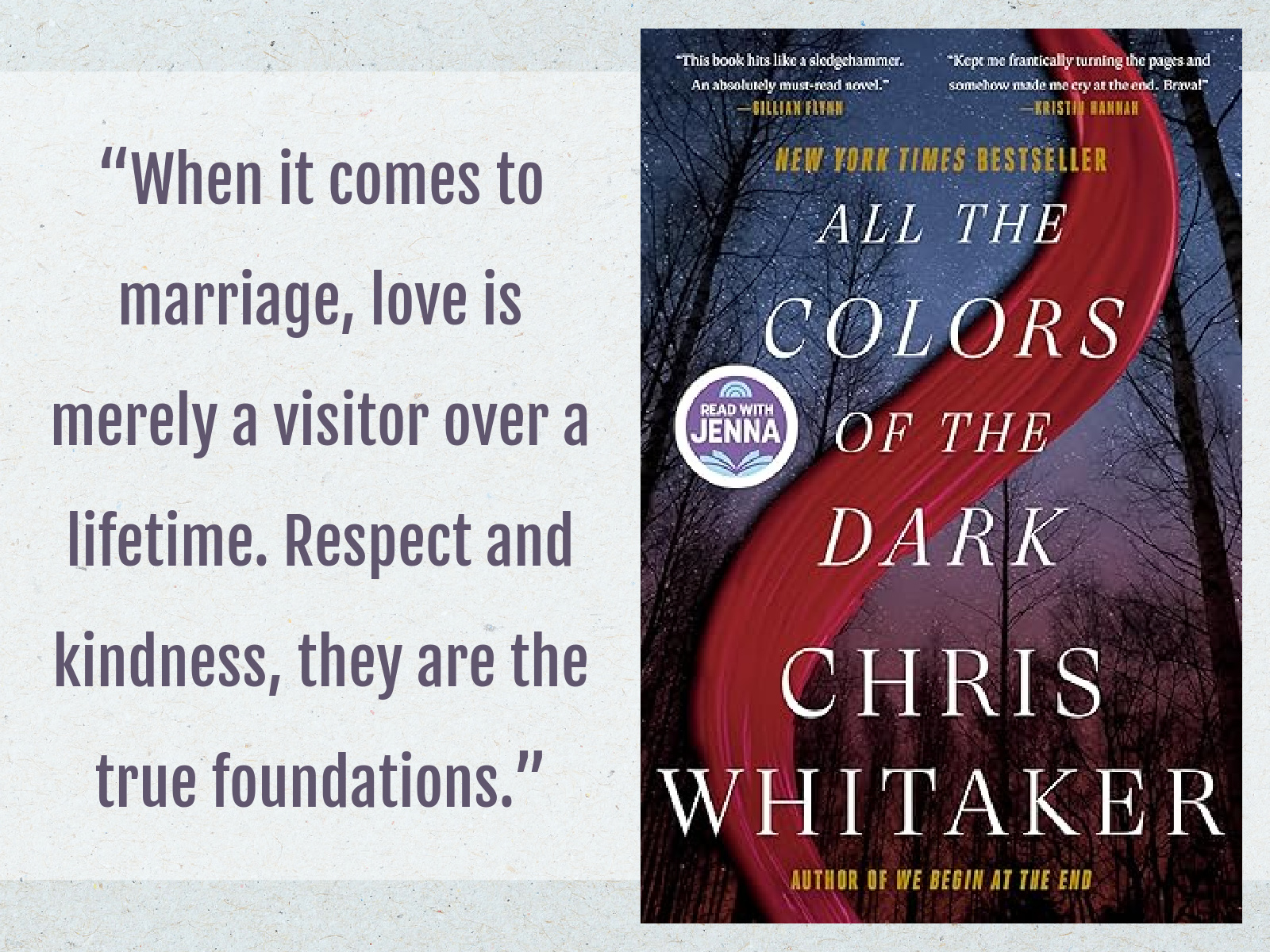
NONFICTION
The Deconstruction of Christianity: What It Is, Why It’s Destructive, and How to Respond, by Alisa Childers and Tim Barnett—I grew up going to a large evangelical church and had wonderful experiences with church and faith throughout my childhood and teen years. I had assumed those around me were having those same positive experiences and, like me, would continue living out their faith into adulthood. Sadly, I have seen many of my youth group friends and even leaders walk away from church and God in subsequent years, claiming they have deconstructed their faith and no longer wanting anything to do with the Christianity of our youth. I’ve been deeply saddened and puzzled by this trend, so when Alisa Childers—a trusted apologist whose work has been transformative in my own faith in recent years—released this book on the deconstruction phenomena, it launched its way to the top of my TBR.
Alisa Childers was just the right person to pen this book, having herself experienced a time of profound doubt verging on deconstruction. She is joined here by apologist Tim Barnett, and together they explain the deconstruction movement—what it is, where it comes from, how it’s different from simply having some questions, and why it is so compelling to many. Tim and Alisa are honest about their hopes to dissuade individuals from deconstruction, and they make a strong case for the truths of Christianity as they critique deconstructionist talking points. They then offer loving but truthful ways that Christians can respond to loved ones in the midst of deconstruction.
This is a necessary and useful guide for those of us who don’t have major hangups with Christianity and want to have meaningful, truth-filled conversations with those who do. Alisa and Tim are compassionate in their response, graciously acknowledging the pain that leads some to deconstruct without ever wavering from the truth of Scripture in their critiques of the movement. The book is well written and theologically sound and is told in a personable, conversational style that makes for easy reading as it addresses complicated issues of church hurt, objective truth, and the appropriate approach to questioning. The book incorporates many true stories from those who have deconstructed, as well as hopeful stories from those who have returned to faith.
Though I’m saddened by the necessity of a tutorial like this one, I’m thankful to Alisa and Tim for their wisdom and courage in sharing this book.
My Rating: 4.5 Stars (Rounded to 4 Stars on Goodreads) // Book Format: Audiobook
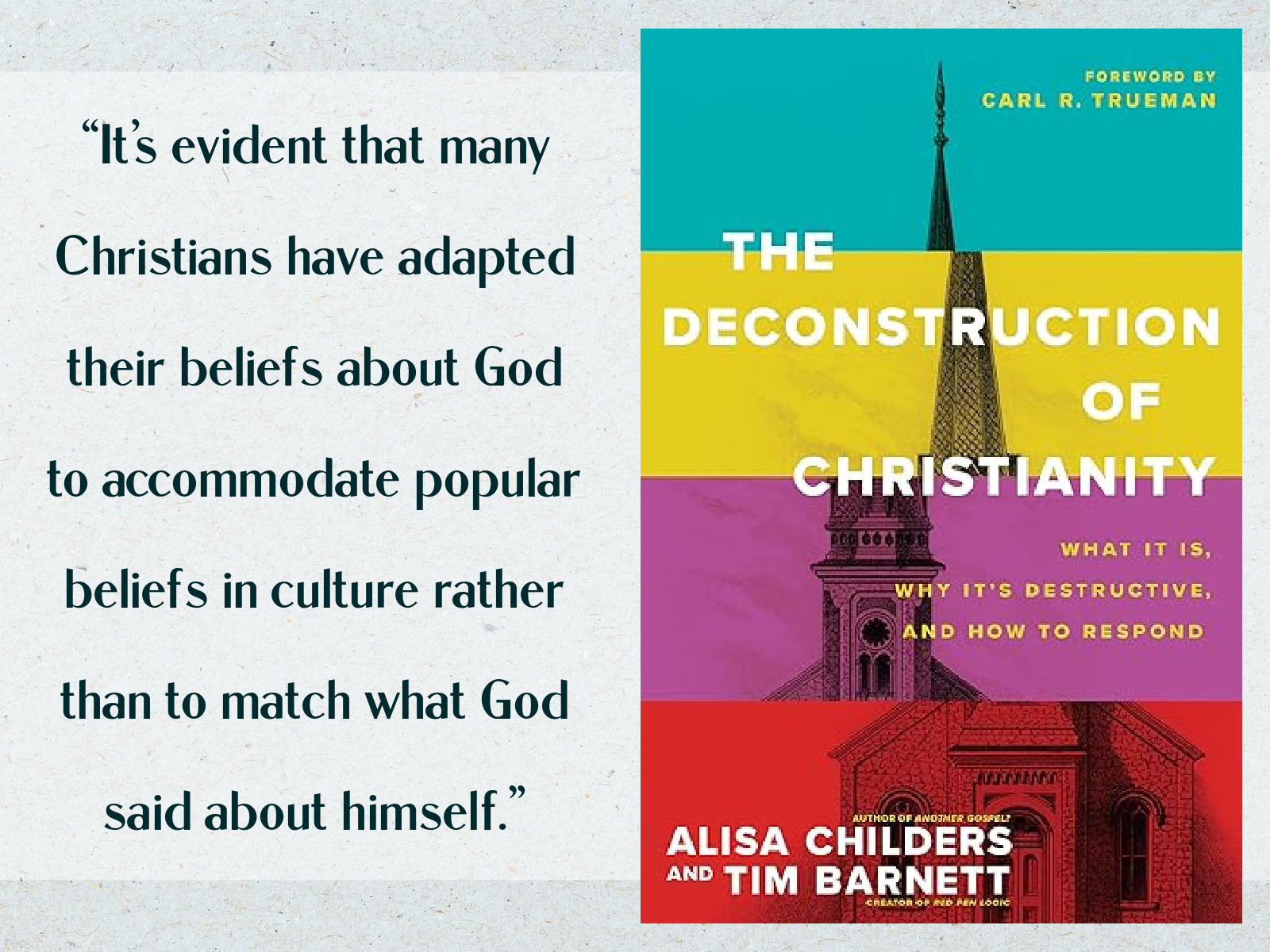
Grief is for People, by Sloane Crosley—In June of 2019, New York author Sloan Crosley had her apartment broken into and her jewelry stolen. Though the pieces were inexpensive, she felt violated and angry and overcome with grief. In her time of need, she leaned heavily on her best friend and former boss, book publicist Russell Perreault. But then, two months to the day from the burglary, Crosley lost Russell to suicide and she quickly realized that true grief should be reserved for for people, not possessions.
In the aftermath of Russell’s death, Crosley begins to conflate her two major tragedies, and her determination to recover her jewelry becomes a mask for her denial over her friend’s death. Eventually she must reckon with her deeper loss, looking back at Russell’s life and their relationship and coming to terms with the unavoidable stages of grief.
This powerful memoir explores several issues that are often overlooked in grief accounts, including grief over a personal tragedy (the robbery) and the loss of a friend (rather than a family member or significant other), as well as the specific form of grief that comes when the deceased has died by suicide. Crosley’s musings are raw and moving and honest, and I admired both her profound perception and her brilliant prose (with several phrases that absolutely stopped me in my tracks). Crosley manages to give words and meaning to some of the life’s most ineffable experiences, and she does so with both honesty and respectful graciousness towards Russell and others in her friend’s life.
Beyond the meditations on grief, Crosley also offers us some interesting insights into the New York publishing scene and life in the city during the Covid lockdowns. These glimpses of ordinary life felt true to the grief trajectory, which demands that life go on while it lingers beneath the surface. This, along with intermingling of the two major crises (the burglary and the suicide), adds dimension and humanity to this memoir, making it a standout in grief canon.
My Rating: 4 Stars // Book Format: Audiobook
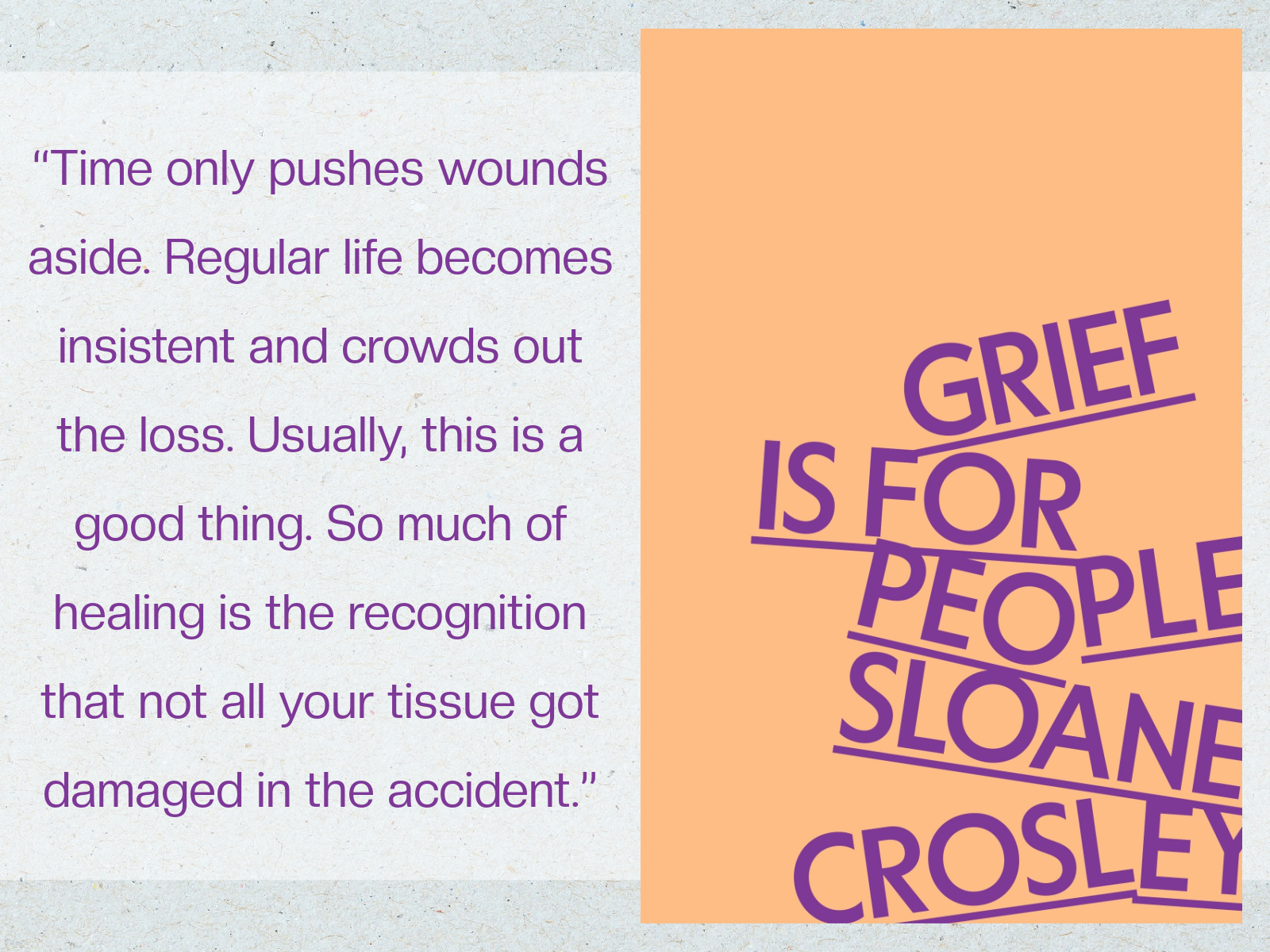
Stand All the Way Up: Stories of Staying In It When You Want to Burn It All Down, by Sophie Hudson—Sometimes you just need to laugh, and Sophie Hudson offers up a whole heaping plateful of laughs in this collection of stories filled with humor, heart, honesty, and plenty of southern sass. Sophie is a football-loving Alabama mama known by many as co-creator of The Big Boo Cast (with fellow podcaster Melanie Shankle) and author of funny, relatable essay collections that are packed with lots of a lot of lightheartedness alongside powerful punches of truth. In Stand All the Way Up, Sophie reflects on the growing pains of middle age, and shares her experience of learning to stand up and speak out when it would be so much easier to run away.
Sophie’s dry wit and occasional snark had me laughing from start to finish with stories that were hilarious and at times very relatable, but there are also some deeply moving and vulnerable moments—from the heartbreaking loss of her mom and her uncomfortable quest for community during a lonely season, to her health journey after years of ignoring her weight struggles and the challenges of navigating an uncomfortable political scene. I loved the emotional swings that felt very true to life, with its inevitable ups and downs.
Sophie loves the Lord and weaves stories about Him and His Word into many of her anecdotes, but her writing is never preachy—except when it comes to cold-shoulder shirts or cell phones in movie theaters, and then she HAS GOT SOME THINGS TO SAY! (but always in a “bless her heart” sort of way, of course). Sophie is confident yet compassionate in her approach, deftly navigating prickly topics in search of common ground. I have a feeling we have our fair share of disagreements regarding politics and possibly even faith, and I was a little confused at how she followed up a chapter about unity with a battle-like call to action in standing up to injustice, BUT I could still appreciate the spirit of wanting both change AND peace. The afterword—about restoration and repentance—is especially powerful and helps to resolve the disparate parts of her message.
While I would have liked some better organization (or simply a clearer, more consistent through-line) from this book that felt a little scattered, I really enjoyed this and love Sophie for her authenticity, clever storytelling, and unique brand of Christ-honoring truth-telling.
My Rating: 4 Stars // Book Format: Audiobook (Sophie’s Southern accent adds so much to the listening experience.)
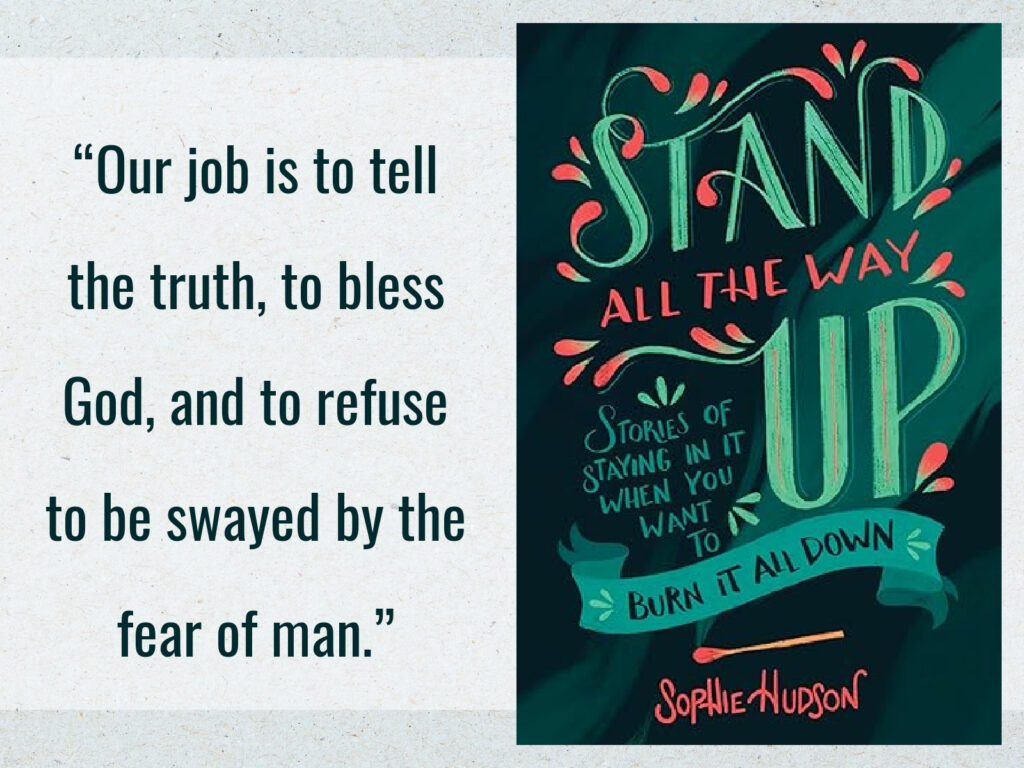
Hannah’s Children: The Women Quietly Defying the Birth Dearth, by Catherine Pakaluk—American women (as well as women in most of the world) are having fewer children these days, for reasons that are varied and not totally understood. But about five percent of American women are defying the trend by having five or more children. Like the Biblical Hannah, these women see their children as “their purpose, their contribution, and their greatest blessing.” And in Hannah’s Children, we get to hear the stories of how and why these fascinating yet often unseen women came to have such large families.
To write this book, social scientist Catherine Pakaluk (herself a mother of eight) interviewed fifty-five college-educated women who were raising five or more (sometimes MANY more) children. Through a series of open-ended interview questions, she explored these women’s reasons for why they chose to have large families and what this choice had come to mean for them as individuals and families, and for our culture at large. While there were common themes in their stories and reasons, each woman offered a unique perspective; together, their answers paint a beautiful portrait of faith, family, motherhood, and purpose. And they speak into our cultural “birth dearth” with unexpected insights into the societal consequences of fewer children, as well as potential solutions for halting plummeting birth rates.
This is such a niche book, and I’m not sure what drew me to it beyond a general (maybe universal?) fascination with larger families. As a mom of four, I’m not quite part of this “big family” demographic, but I have always admired women who are raising multiple children AND I’ve often wondered what leads women like them to have so many kids. Hannah’s Children went a long way in answering my questions and raising my admiration for these women who have sacrificed so much for the sake of their families. I was inspired by these wise, resilient, strong, successful mothers—some of whom set aside enviable careers to raise their children, and others who continue to work outside the home!—and truly blown away by their insights. My only wish is that this book went beyond the reasons for having large families to examine the logistics of their family lives.
Listening to this was a near-perfect reading experience for me. Not only is the subject matter intriguing and the narrator fantastic, but the book came to me at just the right time as I’m still adjusting to life with four kids and feeling differently about my role as a mom. The women in this book were kindred souls who beautifully articulated their attitudes towards children and mothering, giving words to things I’ve felt and haven’t known quite how to explain. While not every woman’s beliefs and attitudes align with my own, I felt such solidarity with the women who explained the interplay between their faith and motherhood; the ways that motherhood has challenged and shaped them; and the rigors and joys of raising children.
Not everyone will appreciate this book that unapologetically celebrates big families while at times disparaging those who have chosen to have fewer children. These women and their stories might cause some readers to scoff at the traditional ideas presented or, conversely, to regret that they do not have large families of their own. After reading I’m surprised to realize I fall into the latter camp; I never wanted more than four children, but the women in Hannah’s Children have me convinced that when it comes to family size bigger really can be better. (For the record, I don’t think that’s in the cards for us but I certainly would be receptive to the idea.) I’m so grateful to the women who graciously shared their stories in this book that renewed my sense of purpose and gratitude for my own mothering journey.
If you’re on the fence about having a big family READ THIS! And if you’re simply looking for stories that celebrate motherhood and help you see the value in your own parenting (regardless of how many children you have), you’ll find that here in droves.
My Rating: 5 Stars // Book Format: Audiobook (The narration is excellent, highly recommend this format.)
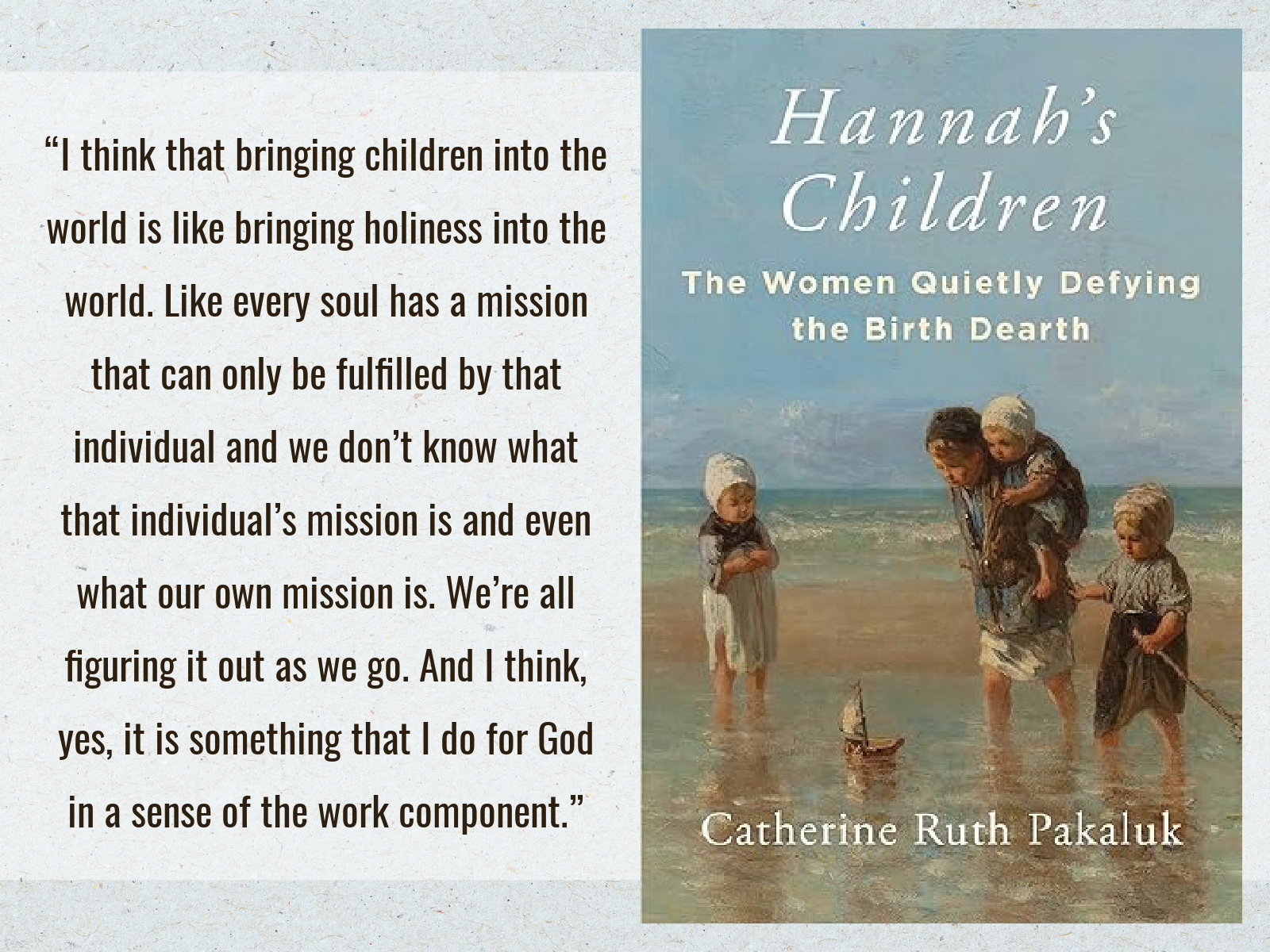
Have you read any of these books? What did you think? What have YOU been reading and loving (or hating) lately?!
Hi, just wanted to say I always read your book reviews and just love the way you review. I like to hear your perspective and opinion on the book, even when it differs from mine. The way you describe books and mention the reasons it wasn’t “for you”, just hits home for me right now, I really don’t know how to describe it, but your reviews are so different in a good way then most every other review I read. Thank you for your time and obviously thought out book reviews!
That is so kind of you Heather, thank you, I’m glad you find my reviews helpful!
Other than Three Days in June (I have it on hold at the library) I may have read every book Anne Tyler has written. I will need to do some research to see if that is true! Favorites: Back When We Were Grownups, Saint Maybe, The Accidental Tourist.
I do love Anne Tyler but have not read any of those! I really discovered her a couple of years ago and am slowly working my way through her backlist. I think French Braid is my favorite, but I loved A Spool of Blue Thread as well. She has such a unique style and a lot of her books are similar but I find them to be comforting.
Hey, Kendra,
I have just gotten hold of Three Days in June and I will be starting it tonight! Glad you liked it. And Hannah’s Children definitely intrigues me—you know how Anne Bogel is interested in city planning? I’m interested in demographics—one child policy, what happens to the women after a world war, etc. But it’s about Chris Whitaker’s book that I have a question. I started his last book, We Begin At the End, and read one chapter before I had to give it up. I don’t want to sound self-righteous, but it was SO filled with profanity, especially the F word, right from the get-go, in every character’s mouth, that I HAD to give it up (wail!) My conscience wouldn’t let me read on! ( Col 3:8). I have heard NOTHING but praise for The Colors of the Dark, that I am wanting to read it. Is it filled with profanity, too? Or is the time period and main characters different…. I hope this comes thru, I was Sue55555 on the other format.
I am fascinated by demographics as well, and would love to read more on the subject. I literally have NOT stopped thinking or talking about Hannah’s Children since reading it, it was so eye-opening in many ways. As for All the Colors. . . I am very sensitive to profanity but I don’t recall an excessive amount in this book (it’s been a few weeks since I finished and I no longer have a copy or I’d look back to check). I too tried We Begin at the End when it first came out and couldn’t get past the first chapter, so your not liking that doesn’t mean you won’t like this one. There is quite a bit of “content” but it didn’t feel gratuitous (which can’t be said for Listen for the Lie which I also reviewed this month, ugh!). I really hope you like Three Days in June!
Thank you, I think I’ll feel safe to try All the Colors! I am interested that you, too, quit his last one. I did also read most of Listen for the Lie, and I felt the same as you—some intriguing premises, and the podcast angle was new to me, and I wanted to find out if she did it!! But the infidelity! Wow! That was over the top. Even a person that isn’t usually bothered by such things commented to me (too late) that “everybody slept with everybody else!” and she didn’t recommend it.